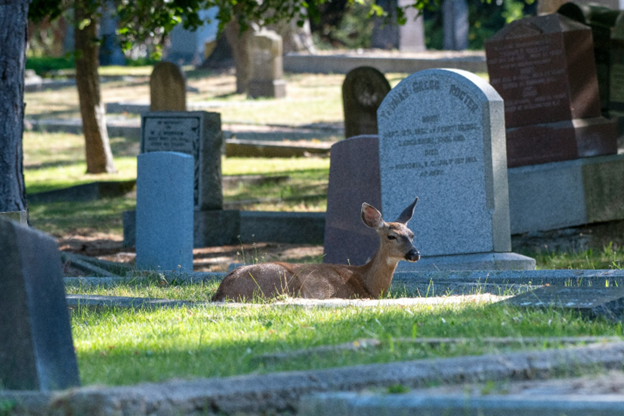The Process of Shape Carving Stone Monuments

Shape carving stone monuments is harder than most people think. You can’t just pick any stone and start chipping away at it. If the wrong stone is chosen or the carving isn’t done right, the monument can crack, wear down quickly, or lose its intended meaning in a short time. Without careful planning and skill, the monument won’t be able to fulfill its main purpose, which is delivering a meaningful tribute.
So, if you plan to carve a stone by yourself, we suggest reading the detailed, expert process shared below to ensure the monument is both beautiful and built to last.
Shape Carving Stone Monuments Procedure and Techniques
Selection of the Right Stone
Different stones have different properties. These aspects impact the carving process and also the durability of the finished monument. Common types of rocks used for monuments include marble, granite, sandstone, and limestone.
- Granite hardness and durability make it ideal for monuments that need to withstand outdoor conditions.
- Marble is softer and easier to carve but requires more maintenance as it can weather easily.
- Sandstone and limestone are easy to carve, but they may not be as durable as granite.
While choosing stones, consider factors like location, purpose, and how you want the monument to look.
Design and Planning
At this stage, sculptors and designers work together to create detailed sketches or models of the monument. These can be created using traditional sketching methods or digital modeling software, allowing for precise visualization of the final product.
- Proportions and measurements are calculated carefully to ensure the monument is visually balanced.
- Surface details like textures, reliefs, and inscriptions are planned out, ensuring they align with the overall theme or purpose of the monument.
During this stage of shape carving stone monuments, special attention is given to the size and shape of the monument to ensure it fits its intended space and scale.
Rough Shaping and Cutting
In this step, large sections of the stone are removed to create the basic form of the monument. Traditional tools like chisels, hammers, and wedges are often used, although modern technology such as pneumatic hammers and diamond-tipped saws has made the process faster and more efficient.
During rough shaping, the goal is to create the basic structure of the monument without worrying about fine details. At this stage, large, unnecessary sections of stone are removed to reveal the general shape.
Detailing and Fine Carving
Once the rough shape carving of the stone monument is complete, sculptors move on to the fine carving and detailing stage. This is where the intricate work begins. You need to be precise and very patient. Fine carving is about adding all the little details to a statue, like faces, shapes, or fancy designs.
To do this, use tiny chisels and sharp tools to get those small, intricate parts right. Make the statue look more interesting by making some parts smooth, some rough, or adding special patterns. This part takes a lot of time because it needs a lot of skill and careful work. If you make a mistake now, it can be really hard to fix, so be extra careful.
Polishing and Finishing
Polishing makes stones look better by either making them shiny or giving them a smooth finish, depending on what you want.
To get rid of rough spots, use polishing stones and sandpaper. For big projects, like monuments, machines are used to polish because they are faster and make the finish look the same all over.
Polishing doesn’t just make the stone look nice; it also helps protect it from the weather. A polished shape carving stone monument doesn’t soak up water easily, which means it’s less likely to crack. This helps the monument last a long time.
Installation and Final Adjustments
Depending on how big it is and where it’s going, this last step usually means taking the carved stone to the right spot and making sure it stays put. You’ll need machines like cranes and forklifts to move heavy stones.
It’s really important to put the monument in just the right spot. This matters not just for how it looks but also to make sure it’s stable. If the monument has words or special designs on it, it’s got to face the right way.
Once it’s there, there might be some final tweaks to make sure it looks perfect in its new home. This could mean getting it perfectly level, making sure it’s firmly attached at the base, and doing any last bits of cleaning or polishing.
Conclusion
Shape carving stone monuments is a detailed and complex process that requires the right materials, skillful carving, and expert finishing. If you rush or miss steps, the monument won’t last or might not mean what you wanted.
At Southern Stone Monuments, we’re experts at creating beautiful, long-lasting stone monuments. Reach out to us to talk about your project. We’re here to help you make a lasting monument to pay tribute to your loved one!
Shape carving stone monuments is harder than most people think. You can’t just pick any stone and start chipping away at it. If the wrong stone is chosen or the carving isn’t done right, the monument can crack, wear down quickly, or lose its intended meaning in a short time. Without careful planning and skill, the monument won’t be able to fulfill its main purpose, which is delivering a meaningful tribute.
So, if you plan to carve a stone by yourself, we suggest reading the detailed, expert process shared below to ensure the monument is both beautiful and built to last.
Shape Carving Stone Monuments Procedure and Techniques
Selection of the Right Stone
Different stones have different properties. These aspects impact the carving process and also the durability of the finished monument. Common types of rocks used for monuments include marble, granite, sandstone, and limestone.
- Granite hardness and durability make it ideal for monuments that need to withstand outdoor conditions.
- Marble is softer and easier to carve but requires more maintenance as it can weather easily.
- Sandstone and limestone are easy to carve, but they may not be as durable as granite.
While choosing stones, consider factors like location, purpose, and how you want the monument to look.
Design and Planning
At this stage, sculptors and designers work together to create detailed sketches or models of the monument. These can be created using traditional sketching methods or digital modeling software, allowing for precise visualization of the final product.
- Proportions and measurements are calculated carefully to ensure the monument is visually balanced.
- Surface details like textures, reliefs, and inscriptions are planned out, ensuring they align with the overall theme or purpose of the monument.
During this stage of shape carving stone monuments, special attention is given to the size and shape of the monument to ensure it fits its intended space and scale.
Rough Shaping and Cutting
In this step, large sections of the stone are removed to create the basic form of the monument. Traditional tools like chisels, hammers, and wedges are often used, although modern technology such as pneumatic hammers and diamond-tipped saws has made the process faster and more efficient.
During rough shaping, the goal is to create the basic structure of the monument without worrying about fine details. At this stage, large, unnecessary sections of stone are removed to reveal the general shape.
Detailing and Fine Carving
Once the rough shape carving of the stone monument is complete, sculptors move on to the fine carving and detailing stage. This is where the intricate work begins. You need to be precise and very patient. Fine carving is about adding all the little details to a statue, like faces, shapes, or fancy designs.
To do this, use tiny chisels and sharp tools to get those small, intricate parts right. Make the statue look more interesting by making some parts smooth, some rough, or adding special patterns. This part takes a lot of time because it needs a lot of skill and careful work. If you make a mistake now, it can be really hard to fix, so be extra careful.
Polishing and Finishing
Polishing makes stones look better by either making them shiny or giving them a smooth finish, depending on what you want.
To get rid of rough spots, use polishing stones and sandpaper. For big projects, like monuments, machines are used to polish because they are faster and make the finish look the same all over.
Polishing doesn’t just make the stone look nice; it also helps protect it from the weather. A polished shape carving stone monument doesn’t soak up water easily, which means it’s less likely to crack. This helps the monument last a long time.
Installation and Final Adjustments
Depending on how big it is and where it’s going, this last step usually means taking the carved stone to the right spot and making sure it stays put. You’ll need machines like cranes and forklifts to move heavy stones.
It’s really important to put the monument in just the right spot. This matters not just for how it looks but also to make sure it’s stable. If the monument has words or special designs on it, it’s got to face the right way.
Once it’s there, there might be some final tweaks to make sure it looks perfect in its new home. This could mean getting it perfectly level, making sure it’s firmly attached at the base, and doing any last bits of cleaning or polishing.
Conclusion
Shape carving stone monuments is a detailed and complex process that requires the right materials, skillful carving, and expert finishing. If you rush or miss steps, the monument won’t last or might not mean what you wanted.
At Southern Stone Monuments, we’re experts at creating beautiful, long-lasting stone monuments. Reach out to us to talk about your project. We’re here to help you make a lasting monument to pay tribute to your loved one!
